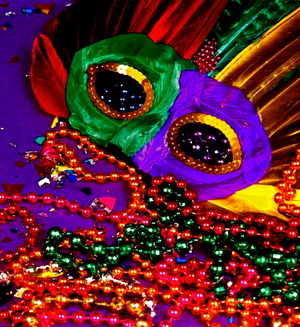The history of the settlers of Louisiana is colorful and rich. Louisiana was once a land populated by Native Americans as was the majority of what we now call the United States. The first settlers to Louisiana were the French, though Spanish explorers had visited Louisiana many years earlier. These French settlers imparted much more than just their language and way of living on this new land.
It should be mentioned that Louisiana had many settlers including Germans, Swiss, and freed slaves, Italians, and Irish, but the French settlers gave Louisiana the “Creole” that it is so famous for. Creole means “a white person descended from the French or Spanish settlers of Louisiana and the Gulf states and preserving their characteristic speech and culture” (Bauman). These mixed breed colonists brought their unique customs and cooking with them, along with everything to do with their lifestyle.
Though Louisiana was a mixed culture of many people, French ideals and customs tended to reign supreme. The language spoken there was primarily French. Creole language was broken up into traditional French, Acadian, and Black Creole. The Creole community was made up of several groups, which had their corresponding class designations. There was the highest class who were the white peoples who were Americans, Creoles, and peoples of European origin. The middle class was made up of free Black peoples. These were liberated slaves and their progeny. The lowest class in the Creole community was made up of slaves.
The Creole culture became very mixed due to the high class Creole male sexual practices. Young men were given their own places for entertaining. Husbands were often unfaithful and had mistresses who were often black or mixed (known as mulatto). It was not acceptable for these white men to marry their mistresses though. “Having a mistress was an accepted custom because marriages were usually business arrangements, not for love, and men expected their women to be passive and innocent lovers” (Bauman).
The Creole society loved dancing and music. There were many balls. There were “society” balls, which would be financed by groups of young men, both married and unmarried. To go to these balls, you subscribed for tickets which would entitle you to entry into a certain number of balls. Oftentimes these balls were held in honor of various occasions and dignitaries that may be visiting the area. There were also public dances for the lower classes. Black and white balls were held for the lowest class of society. Dance hall girls, call girls, and kept women, usually dark or lighter skinned, would attend to dance with the white men” (Bauman). There were also Quadroon’s or Blue Ribbon Balls for Black women and white men. The King’s Ball opened carnival season and was held on January 6 which is considered by Catholics to be Epiphany. This ball was only for the highest class of society. From January 1 to Mardi Gras there were many costume balls and masked balls for all levels of society.
Another form of dance that was often seen in the Creole community was the dinner dance. These were dinner dances that happened in people’s homes on Sunday nights. It was a night consisting of a big dinner and dancing. When they were held on plantations, the guests often stayed for days after the ball.
Creole customs were flavored by Catholic religious holidays as well as French and Spanish customs. The most notable Creole customs are the Mardi Gras celebrations, Easter, and All Saints Day remembrances.
Perhaps the most well-known thing about Creole culture is the cooking. Creole cooking finds its roots in French cuisine, but it also uses Spanish spices and African vegetables provide inspiration. There are also elements of Caribbean cooking, Irish, German, and Italian cooking as well. It would be best said that Creole cooking is a combination of cuisines of all those who immigrated to Louisiana. Coffee and rice are both important elements of Creole cuisine as are cream and butter. Chicory is often added to the coffee. Leftovers are combined into delicious new meals with items like onions, celery, bell pepper, or parsley. Many Creole main dishes consist of fish such as crawfish, other shellfish, trout, etc. Some signature Creole dishes are gumbo and jambalaya. Gumbo is a type of stew made with rice and meat and spiced with sassafras. Jambalaya is spicy mix of meat, rice, and vegetables. Creole cuisine is a standout part of Creole culture that is recognized globally.
Louisiana has a rich history steeped in many cultures with much mixing and intermingling. The French settled Louisiana, creating a new Creole culture which mingled with the other immigrating peoples but primarily the Spanish who also had much influence over the region in the early days of the United States and the Thirteen Colonies before that.
Sources:
Creoles of Color of Louisiana
French Creoles in Louisiana: An American Tale
Louisiana-History




